If there’s a more fortunate variety of vehicle simulationist than the rail simmer, I’m unaware of them. While the likes of the truck, bus, boat, and airliner enthusiast might, if they’re lucky, have a couple of strong, singular, supported titles to choose from, the iron horse fan has, by my calculations, at least six. Up until the end of last year, I’d have classified three of that half-dozen – Derail Valley, Diesel Railcar Simulator, and Train Simulator Classic – as truly indispensable. Now Early Access Railroader has arrived, I’m tempted to say there are four ‘essential’ commercial rail sims.
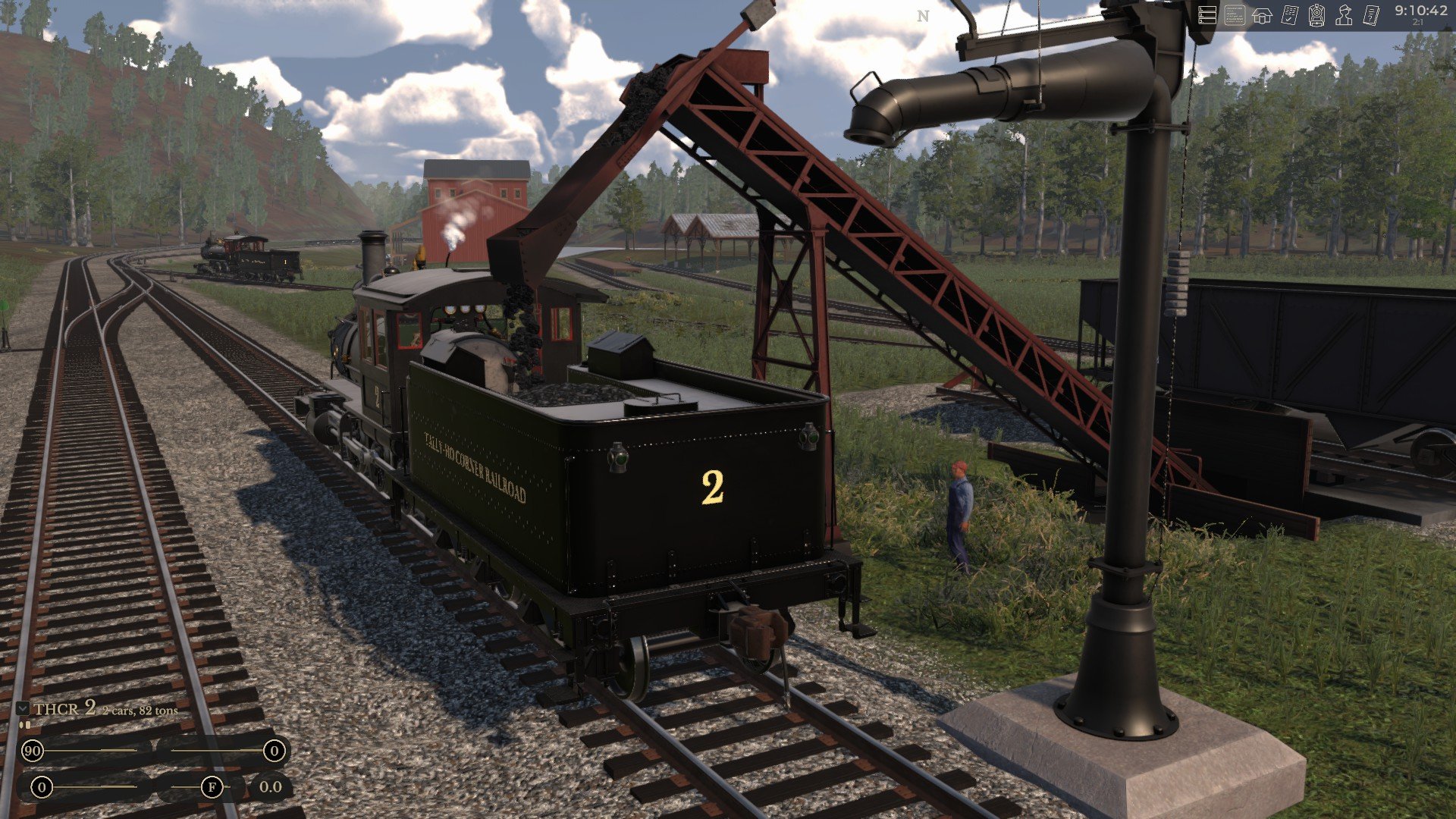
What makes the £25 Railroader a must-buy for footplate fiends? In a nutshell, it’s the only rail sim I know of that lets me manage a branchline as well as personally operate convincingly modelled locos. Currently both facets of the game have shortcomings, but none of the weaknesses have stopped me forging a firm friendship over the past seven days.
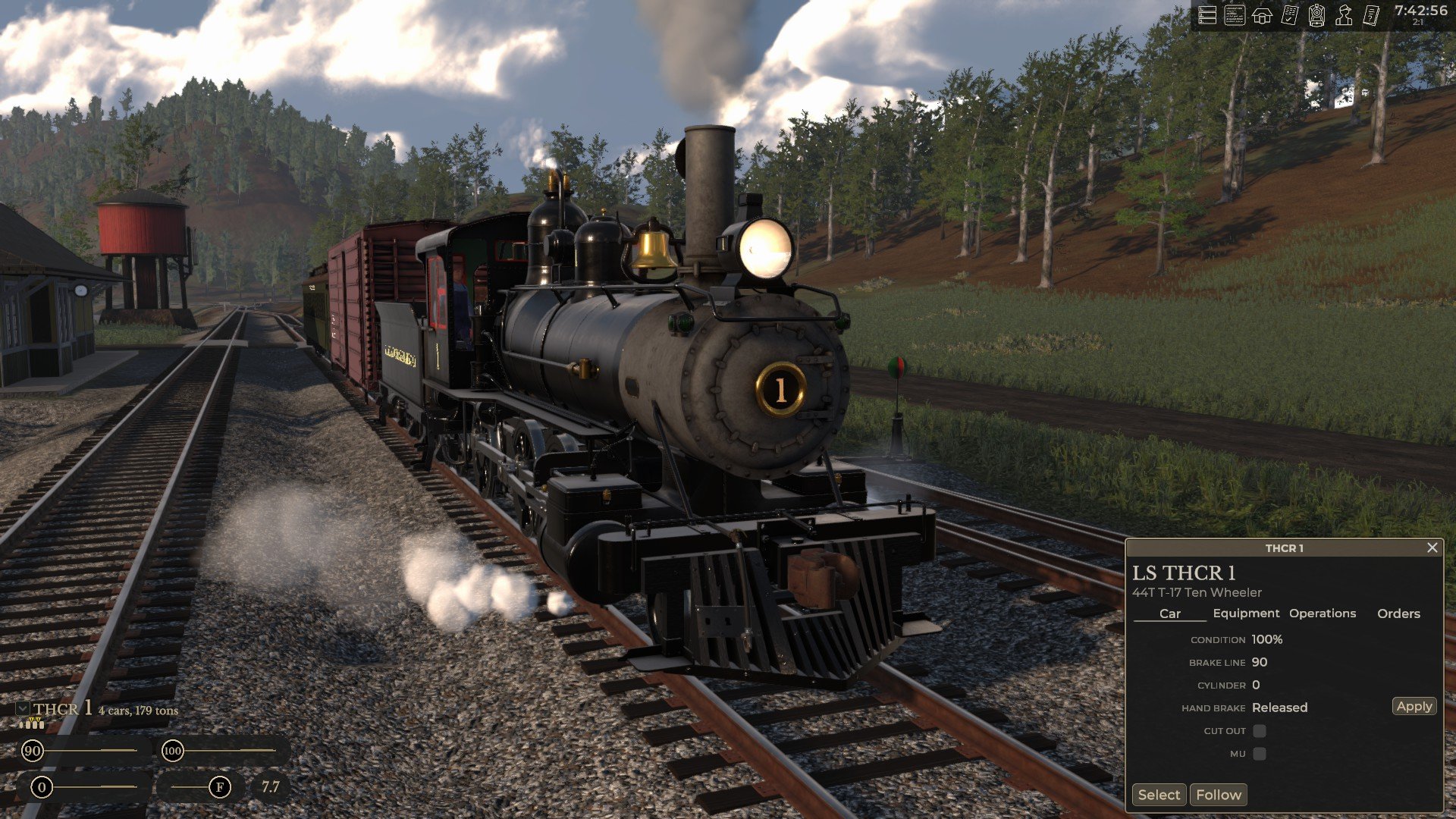
Still very much in its infancy, the THCR (Tally-Ho Corner Railroad), like all Railroader companies, operates in rural North Carolina during the 1940s/50s. At present most of our income comes from conveying invisible passengers between two one-horse valley settlements – Whittier and Ela – and transporting full and empty freight cars between East Whittier Interchange – our link to the rest of the US rail network – and various local businesses.
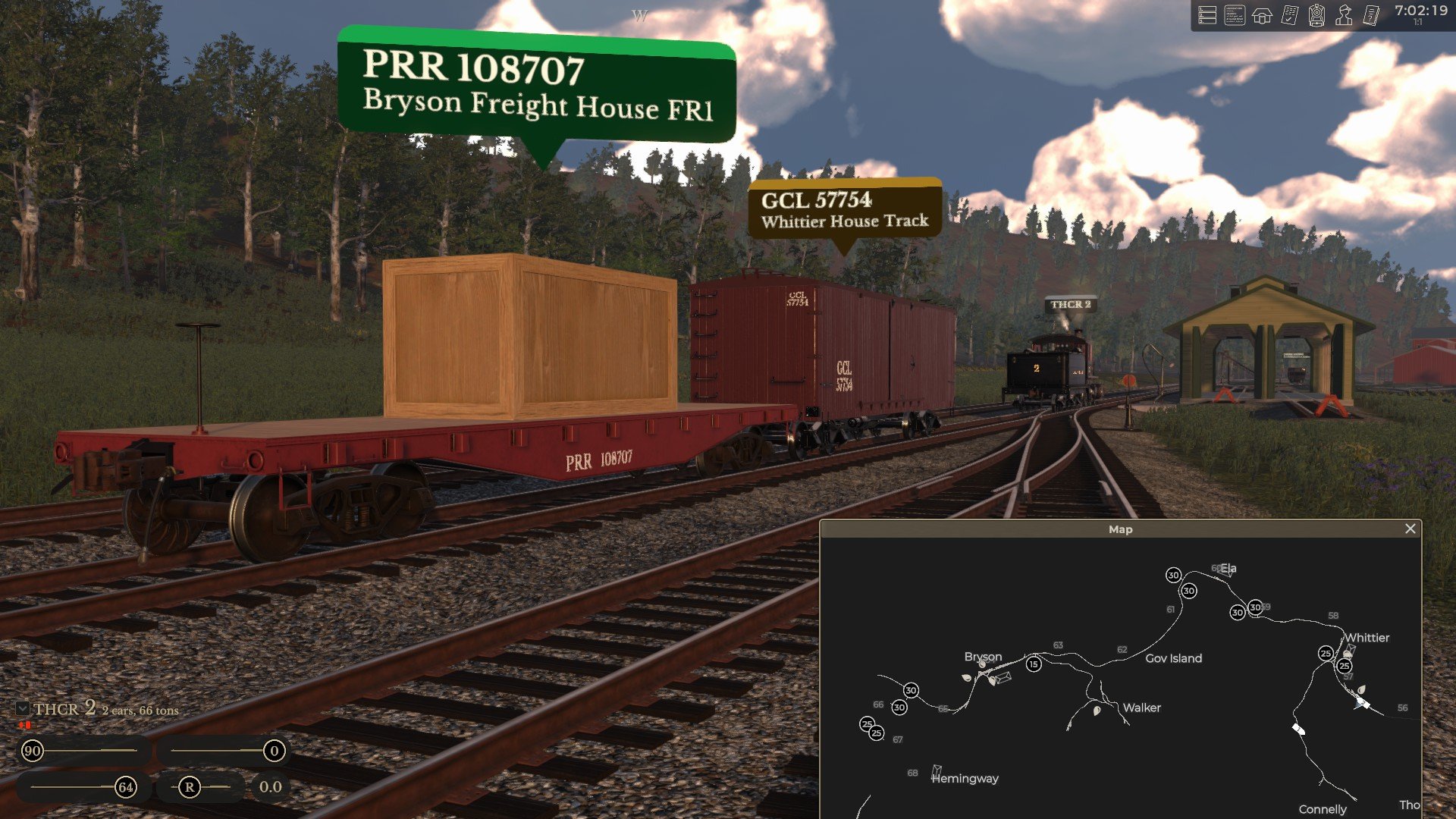
We have contracts with a sawmill, agricultural supplies merchant, heating oil company, and factory. When wagons destined for these concerns turn up in the yard at East Whittier, one of our two elderly steam locos collects them and sets about delivering them. A day or two later, when the businesses have emptied or filled these wagons, we trundle them back to the yard.
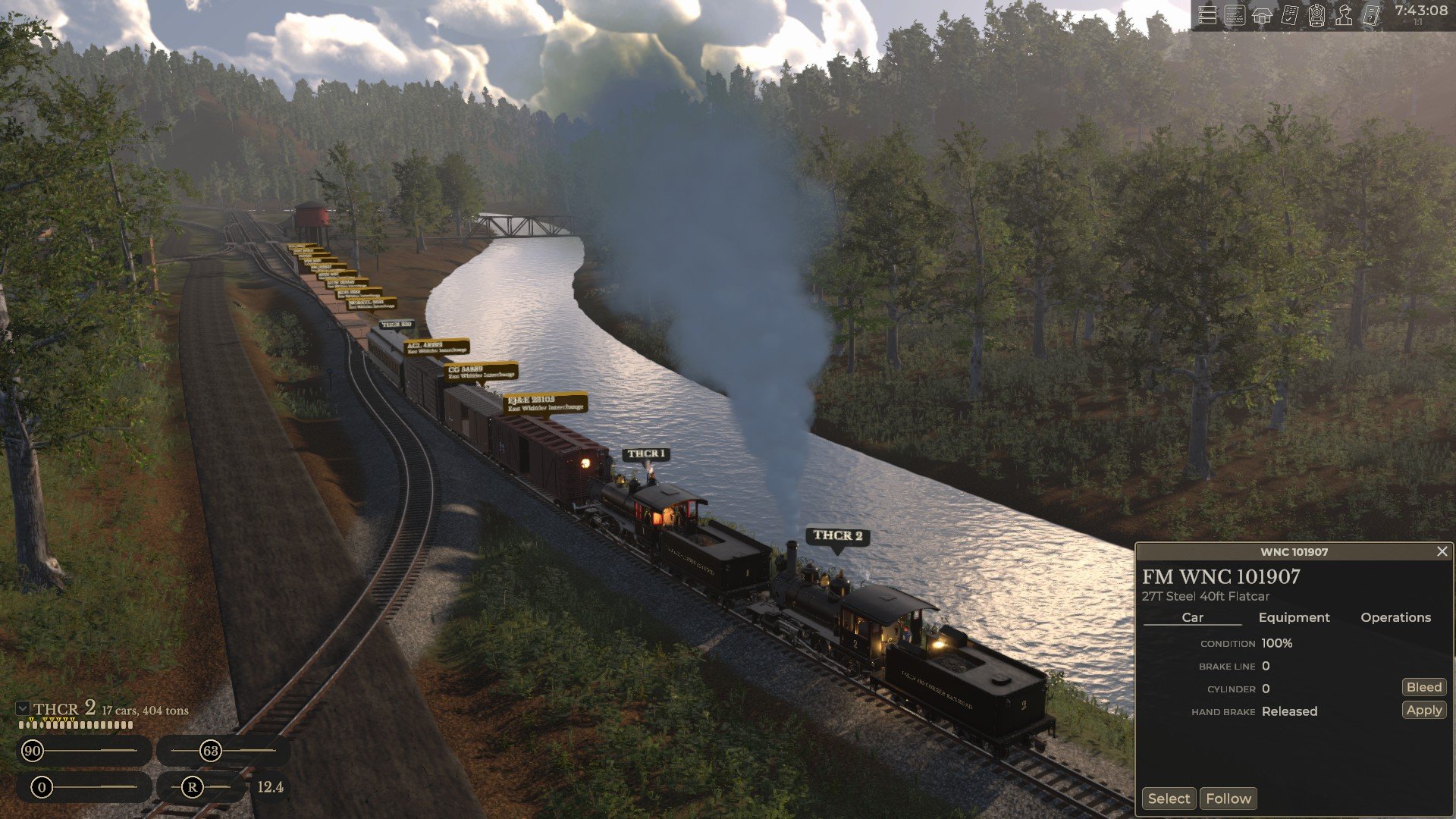
The longest/heaviest trains THCR1 and THCR2 (sadly, you can’t name your motive power in Railroader) have hauled this past week, have taken supplies and workers to the flood-damaged bridge at Ela. In a day or two’s time the final phase of the repairs will be complete and we will be able to start serving settlements and companies on the western side of the river.
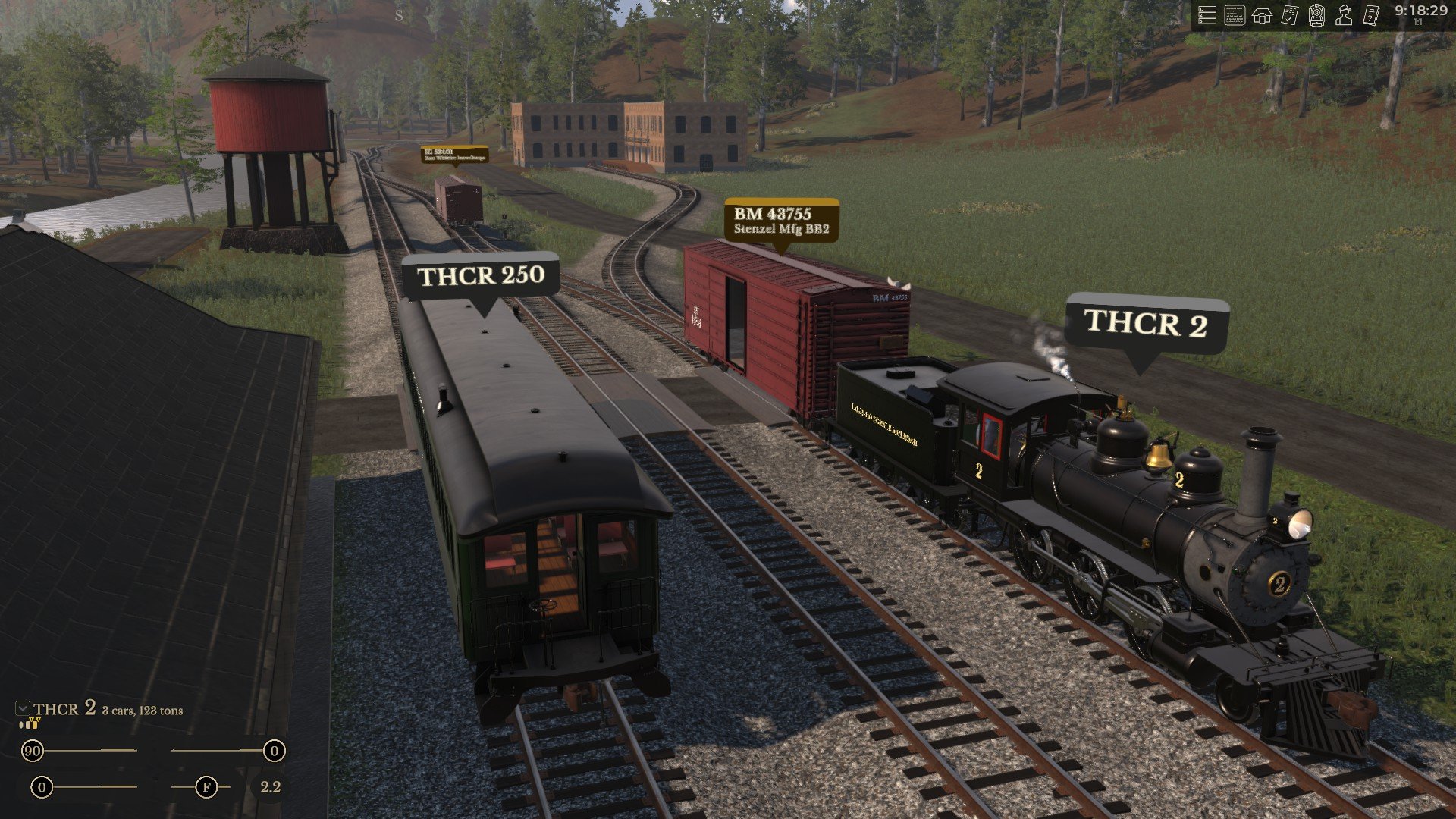
To be honest, I’m in no great hurry to expand as the THCR’s current workload already keeps me pleasantly busy. Railroader has a splendid knack for producing Inglenook shunting puzzles on the fly. What seem, at first glance, to be childishly simple wagon-moving jobs often prove complicated when underway. Suboptimal train organisation… short or occupied sidings… the irresistible (in my case) urge to kill as many birds/tasks as possible with one stone/service… many things can provoke pondering and unanticipated toil. Before you know it you’ve spent an hour throwing points levers, coupling and uncoupling wagons, and shuttling to and fro like an abacus bead.
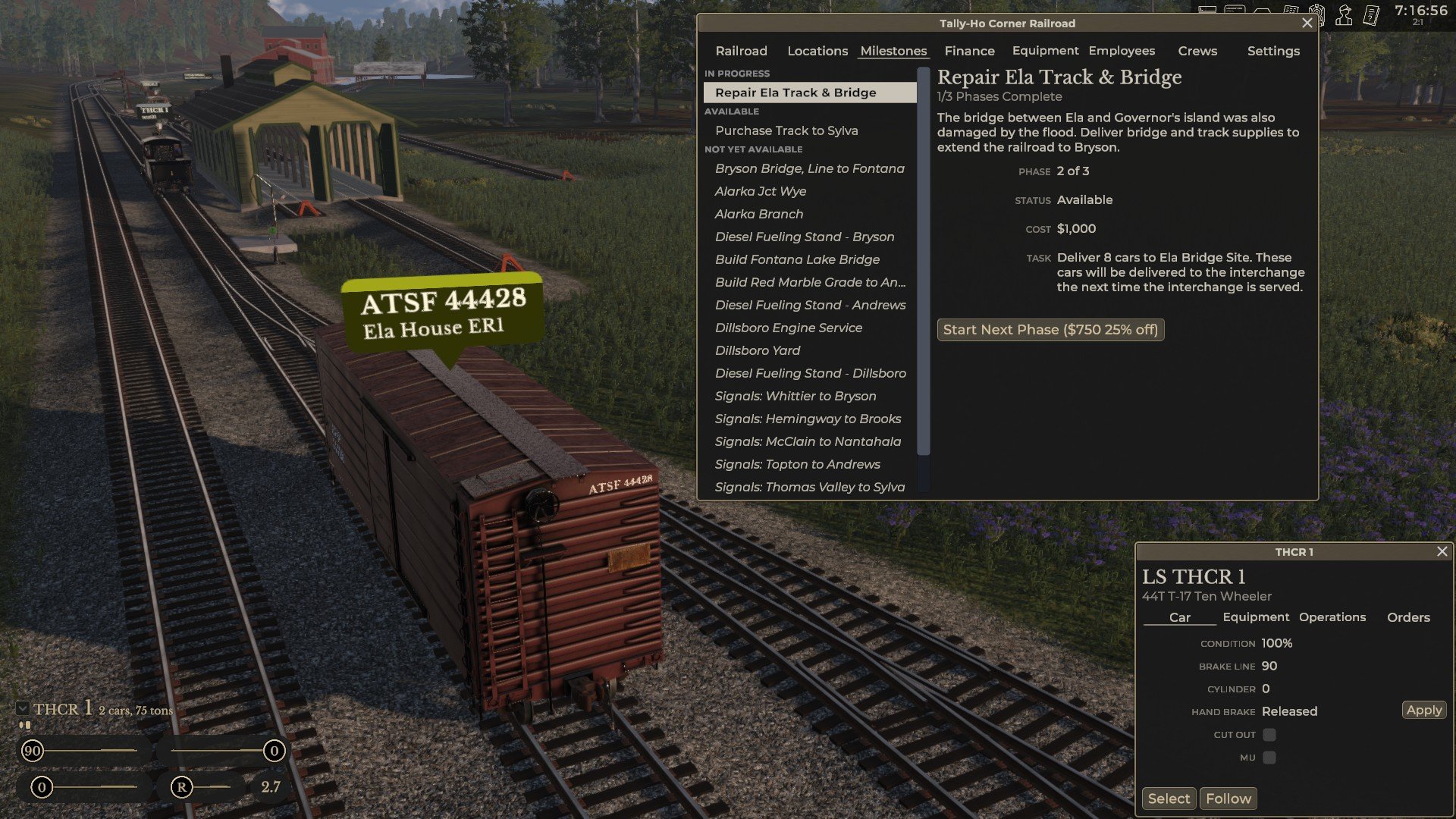
The game uses a system of contract tiers and mission-style ‘milestones’ to ensure players of all stripes are kept happy. Only take on Tier 1 contracts and tackle milestones now and again and there’s very little chance you’ll find your daily commitments overwhelming. Customers, be they passengers or business owners, are extremely tolerant right now. I don’t believe I’ve ever incurred a penalty for a late delivery or an inadequate service. Not only will the users of your elderly Pullman coach tolerate erratic scheduling (there’s no need to keep to a timetable or provide more than one service per day) they also seem happy to overlook prangs and accidental stop-overs. One morning when I collected my carriage from its overnight resting place, I noticed I’d forgotten to call at Whittier station the previous evening; fifty or so travellers had spent the night slumbering in a siding!
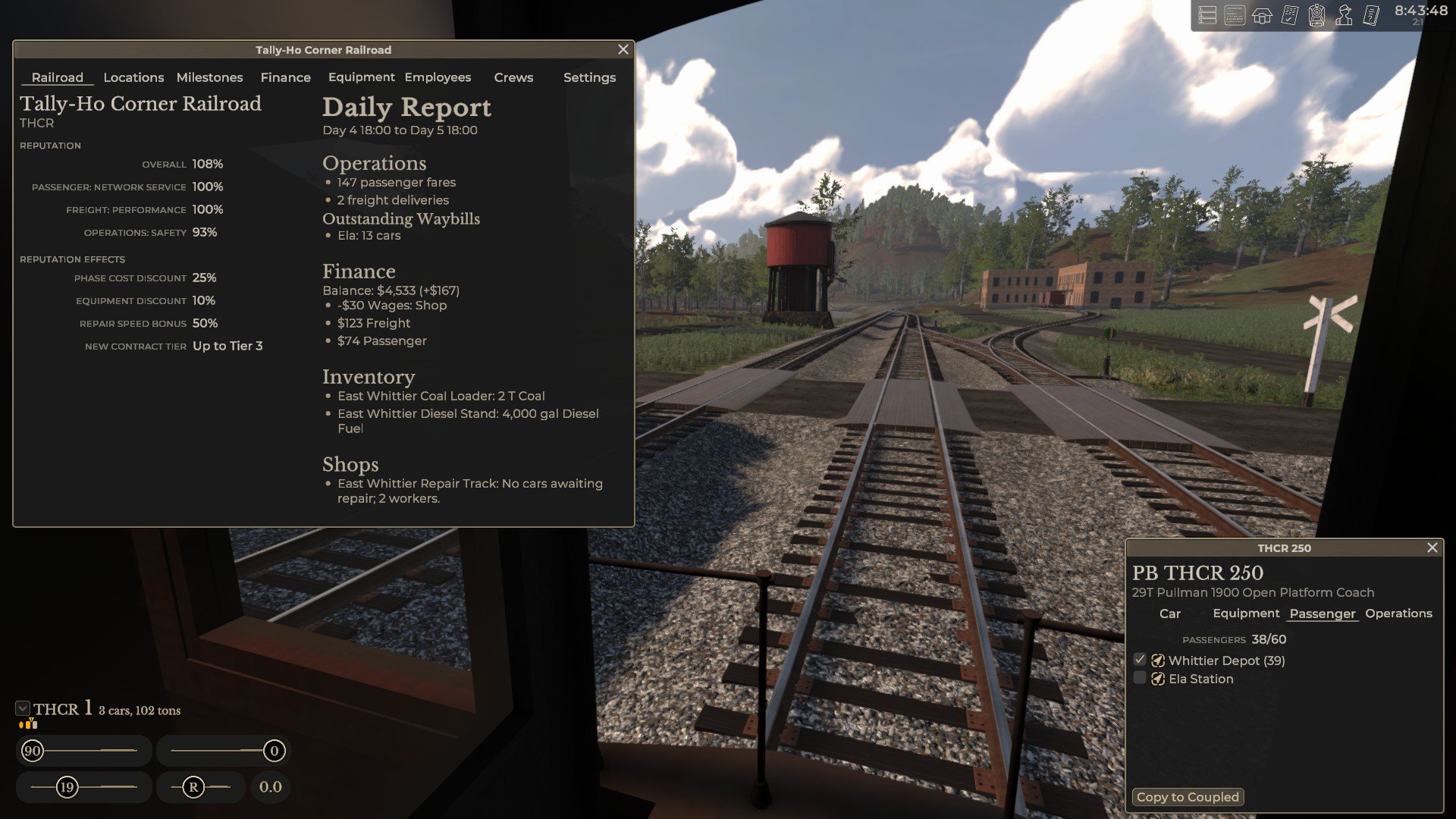
While turning a profit isn’t hard, making enough moolah to expand and go rolling stock shopping does take time and industry. Tempted by locos, carriages, and wagons on this list, I’ve come awfully close to taking out a loan. Only the counsel of my inner accountant (“The interest rate is high and, strictly speaking, we don’t need new stock.”) has stopped me.
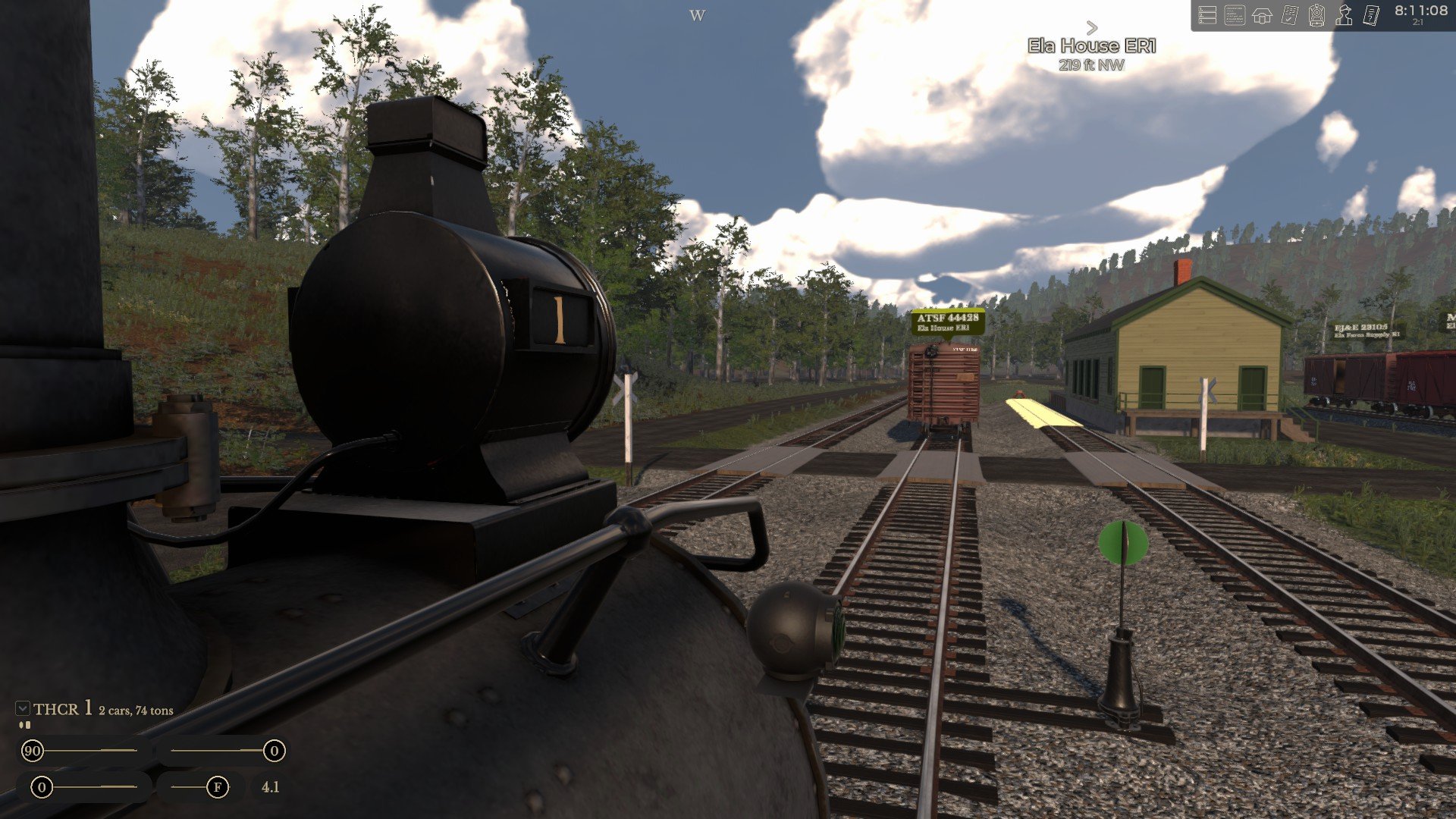
Somewhat counter-intuitively, staff wages aren’t a major concern in Railroader. Although you need to employ a worker or two to keep your repair workshop running (stock can be damaged by collisions and derailments) the game doesn’t expect you to take on station staff, drivers, firemen, brakemen, signallers etc. The relatively unsophisticated AI drivers that are always just a keypress away, cost you nothing.
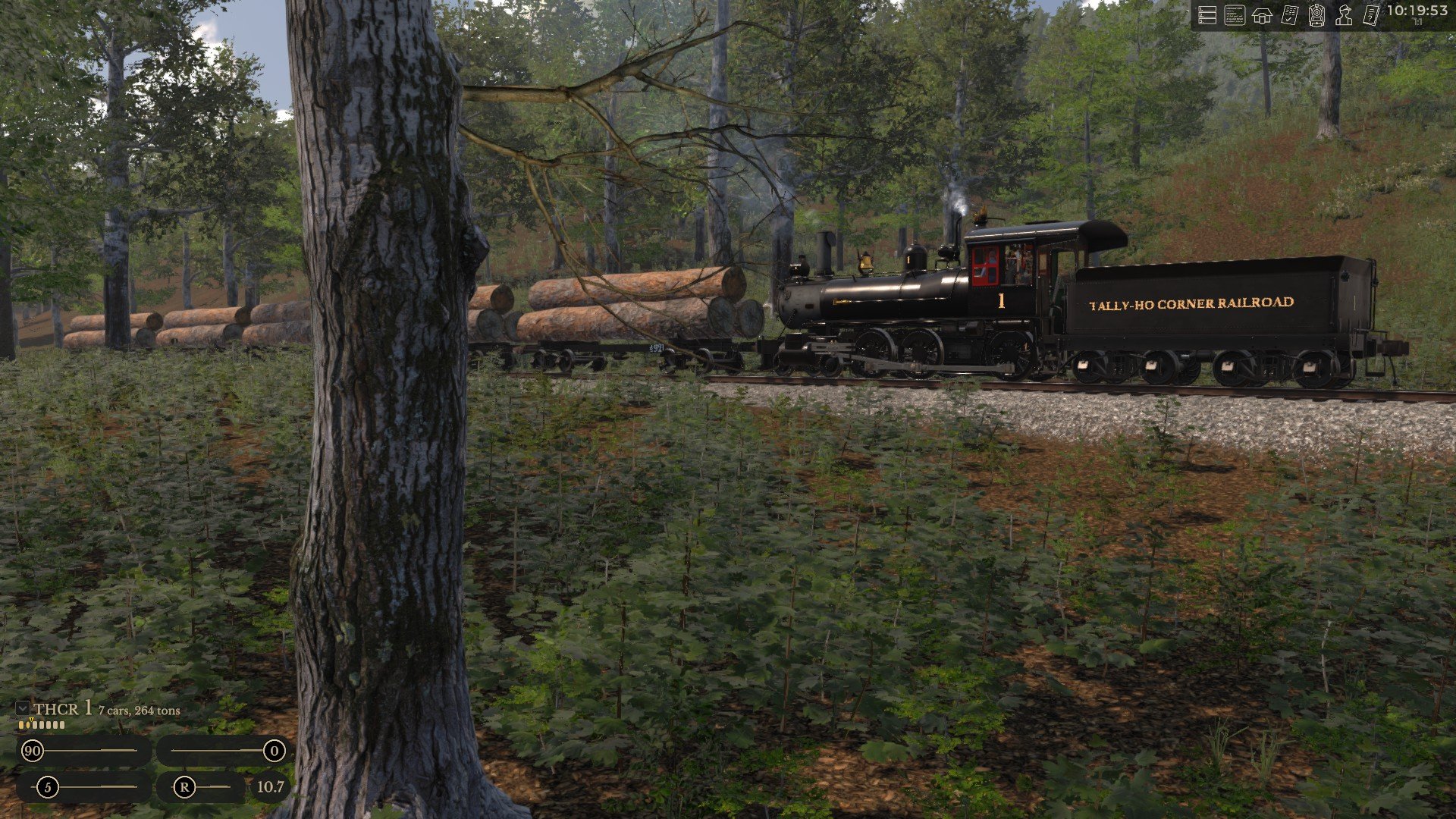
“Relatively unsophisticated”? Once assembled, a train can be switched to ‘road mode’ and a silicon crew who will take it in the direction you choose at a speed you dictate. If they encounter an obstruction en route, be it another train, a dead end, or a potential trailing point movement, they’ll usually halt and report the problem via an on-screen message. Only after you’ve teleported to the spot and created a path, will the AI train continue on its way.
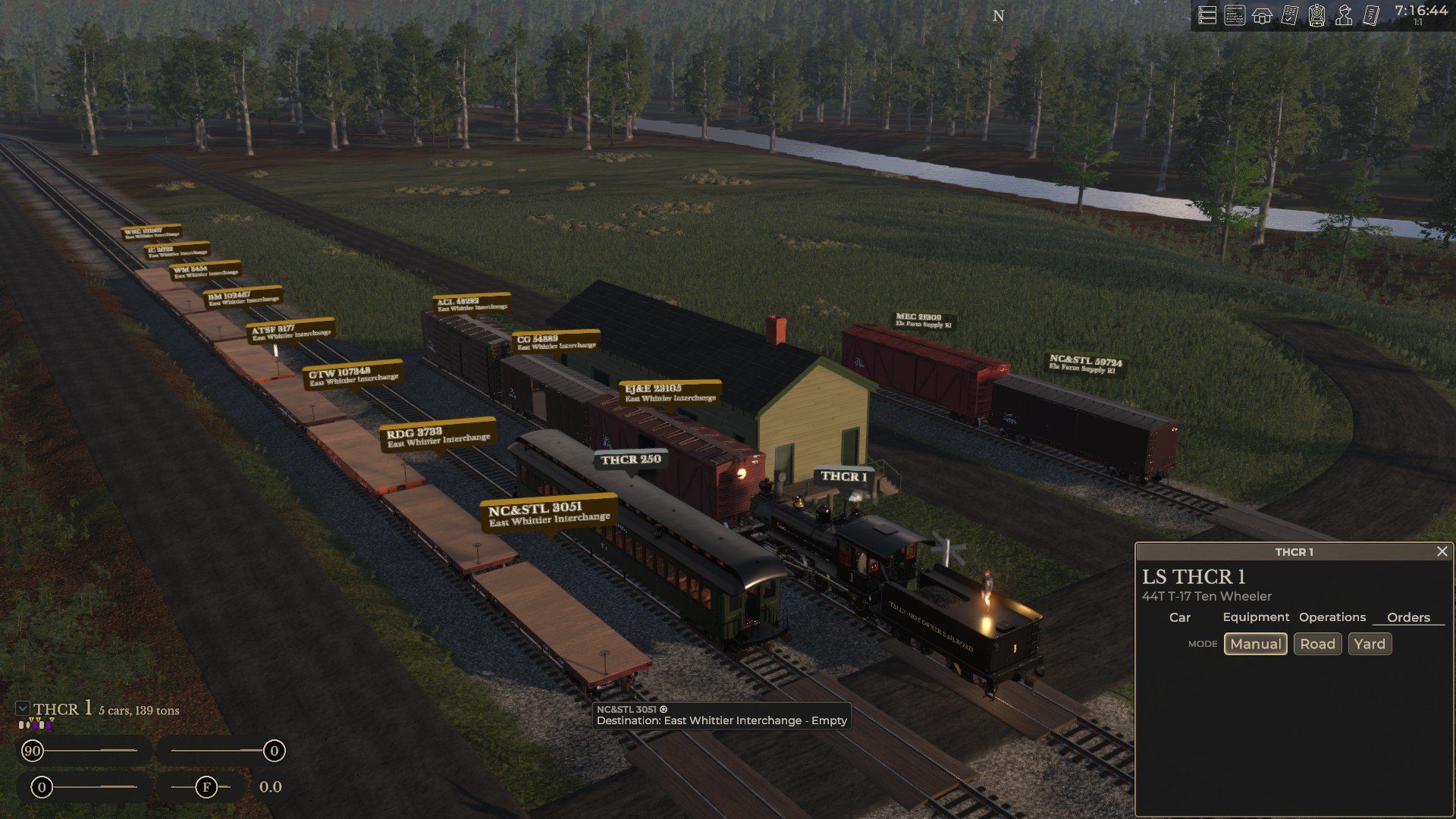
‘Road mode’ is an invaluable aid for a rail simmer with more locos than hands, but it would be even more useful if AI drivers could be given destinations rather than just directions and speeds. As things stand, if you want to entrust, say, a passenger service to the computer, you must ensure the switch immediately before the next station is set against the train, so that it doesn’t scuttle past without stopping. (EDIT: As VFRHawk and jabbywocky point out below, fusees – player-placeable warning flares – can be used to stop AI-controlled trains at stations and other desirable locations).
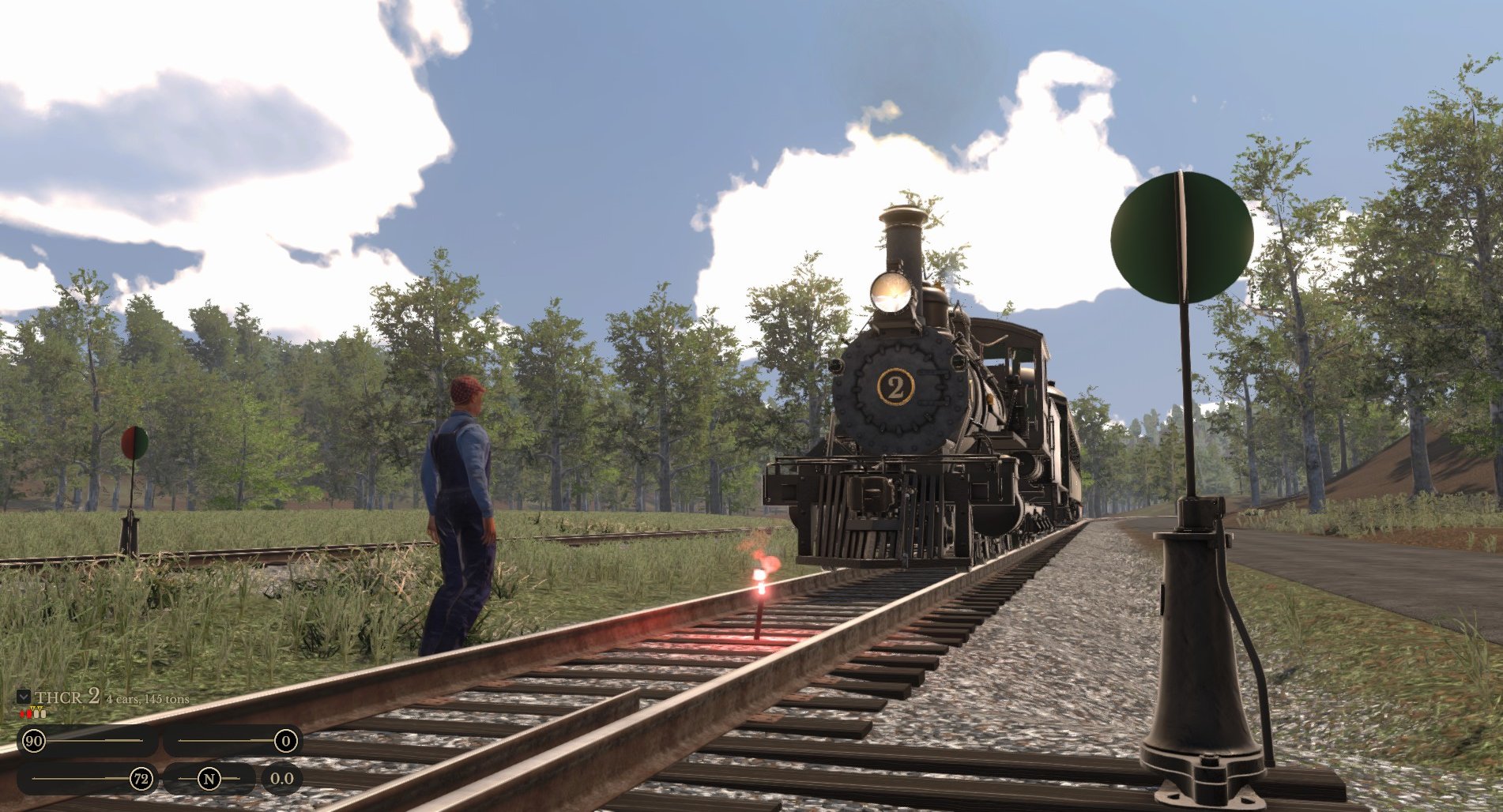
The THCR’s dinky bailiwick means I’ve yet to discover how digital drivers react to signals.
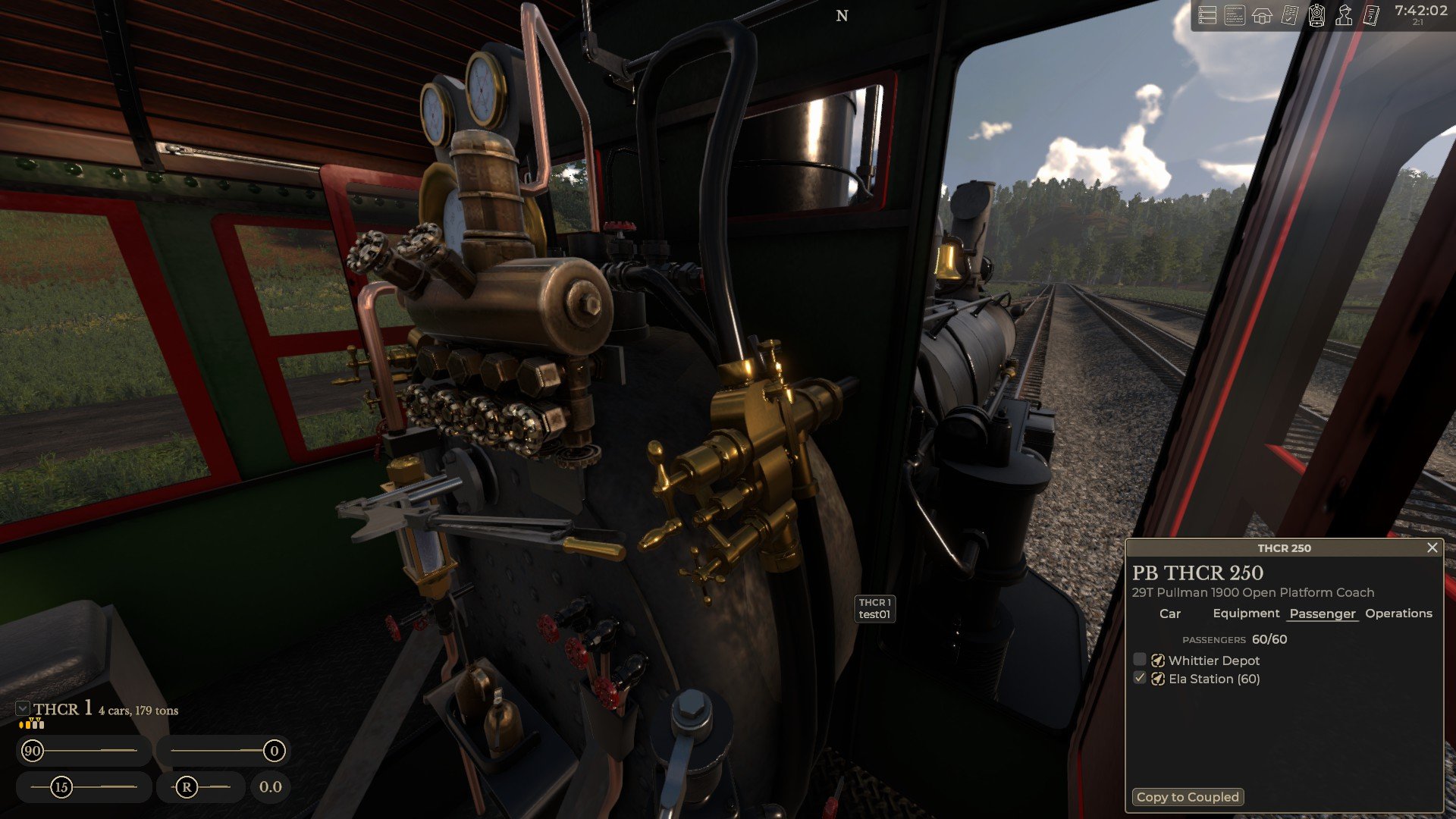
Assuming you’ve set the camera to follow a train moving in road mode, the GUI speed slider can be used just like a model railway controller. This is Railroader at its simplest and friendliest. Dispense with AI assistance, and it’s possible to operate a loco’s four main controls – regulator/throttle, reverser, train brake, and loco brake – via keyboard, GUI sliders, or moused cab levers and wheels. I was a little disappointed to find that boiler and fire management weren’t necessary when operating THCR1 and THCR2. Anyone accustomed to manipulating blowers, dampers, injectors, and cylinder cocks on virtual footplates will probably find Railroader’s smoke spewers a tad shallow.
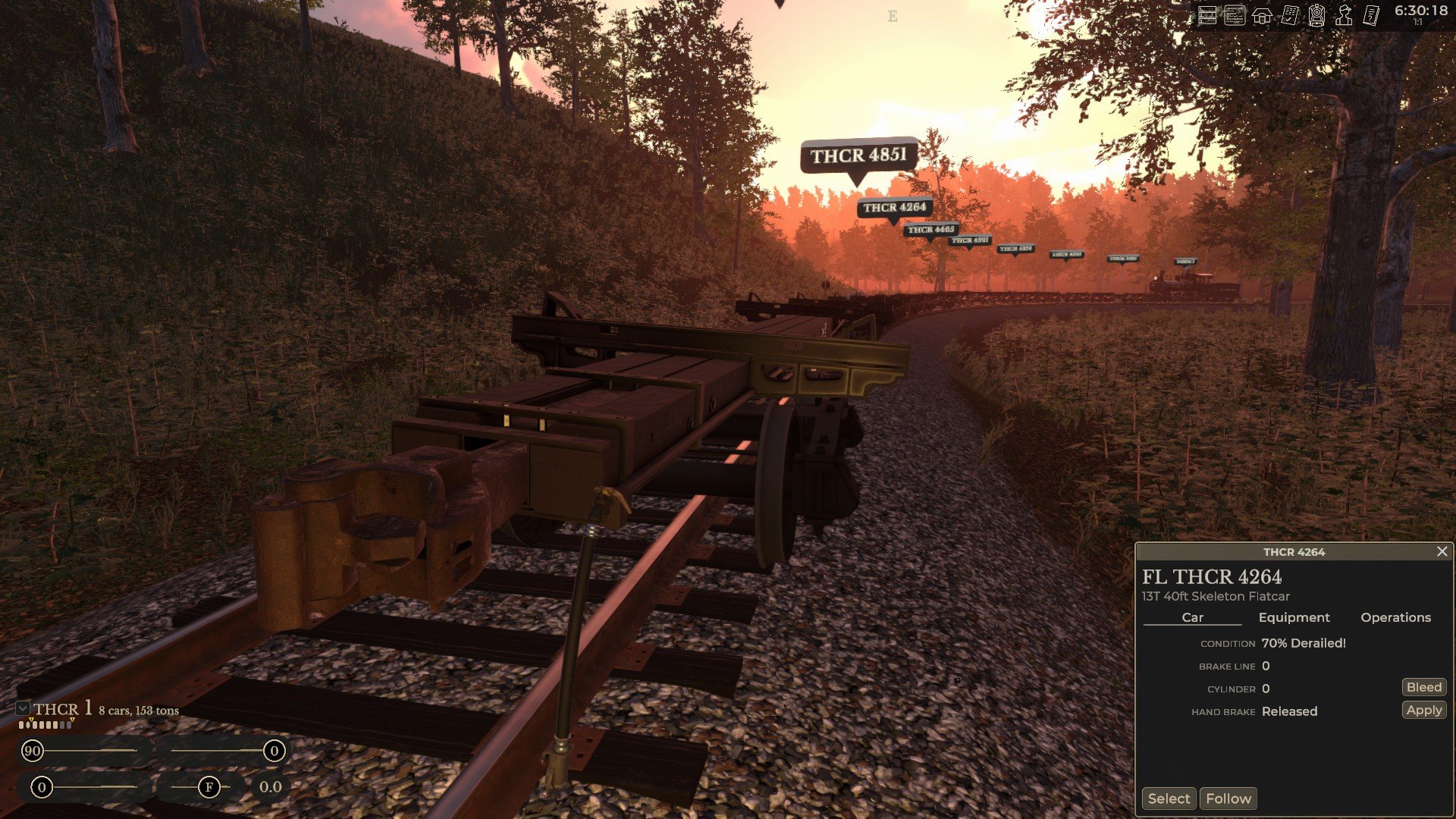
Happily, while the systems modelling may not be as thorough as some may desire, the underlying physics are pretty solid. Yes, wheel-slip doesn’t appear to be simmed and cab sway is barely detectable, but locos don’t leap forwards or backwards the moment you open the regulator, chuffs, chimney emissions, and piston rod movement are beautifully synchronised, and collision and derailment repercussions ring true.
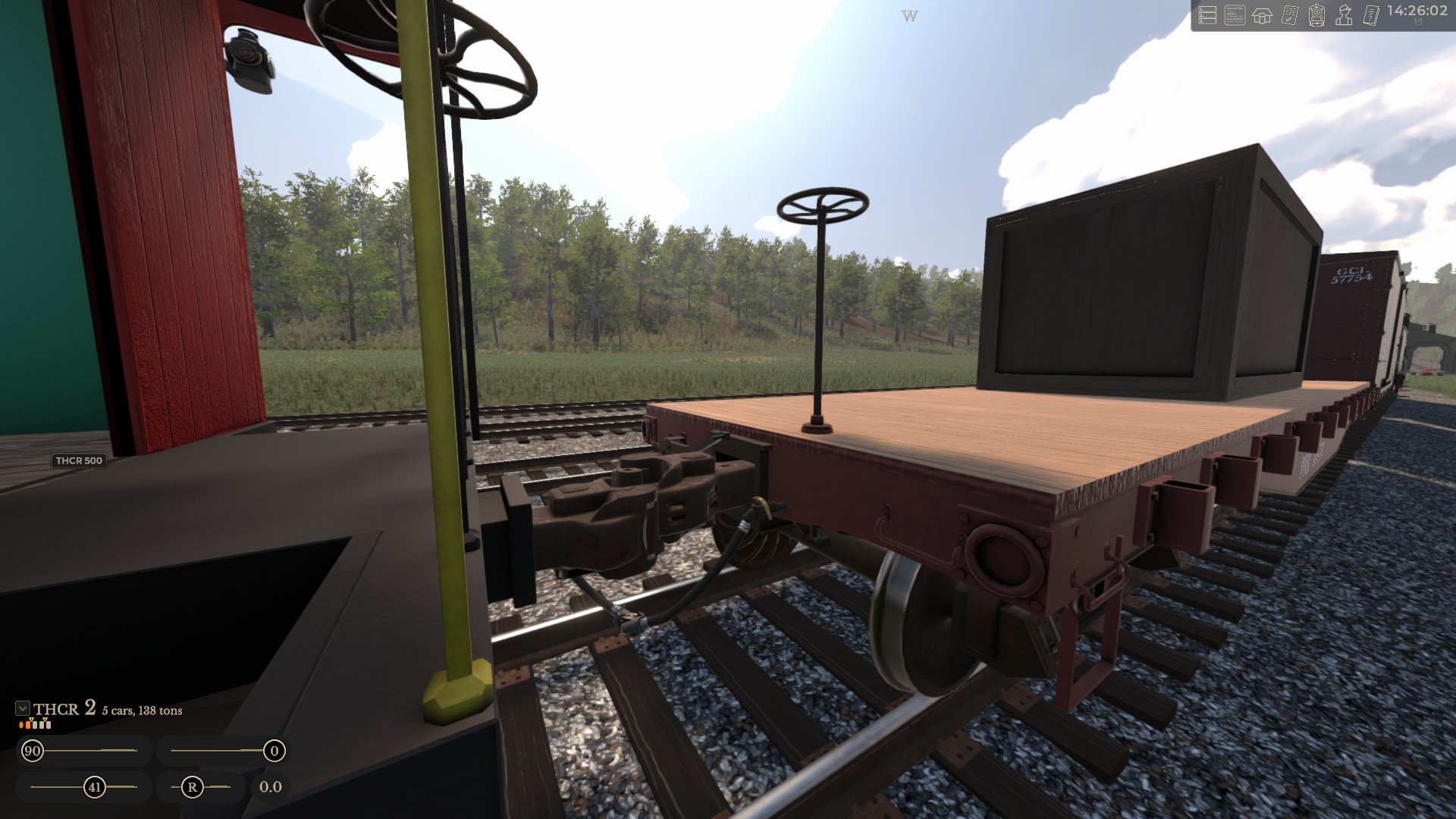
It takes considerable tractive effort to stir long, heavy rakes of stationary wagons, and plenty of brake power to retard them when they’re in motion. The tiny (10%?) portion of the map I’ve unlocked thus far, is almost entirely flat, but watching the way loose wagons roll on slightly sloped sidings, I suspect the grades I’ve glimpsed in screenshots and videos, will need to be treated with respect.
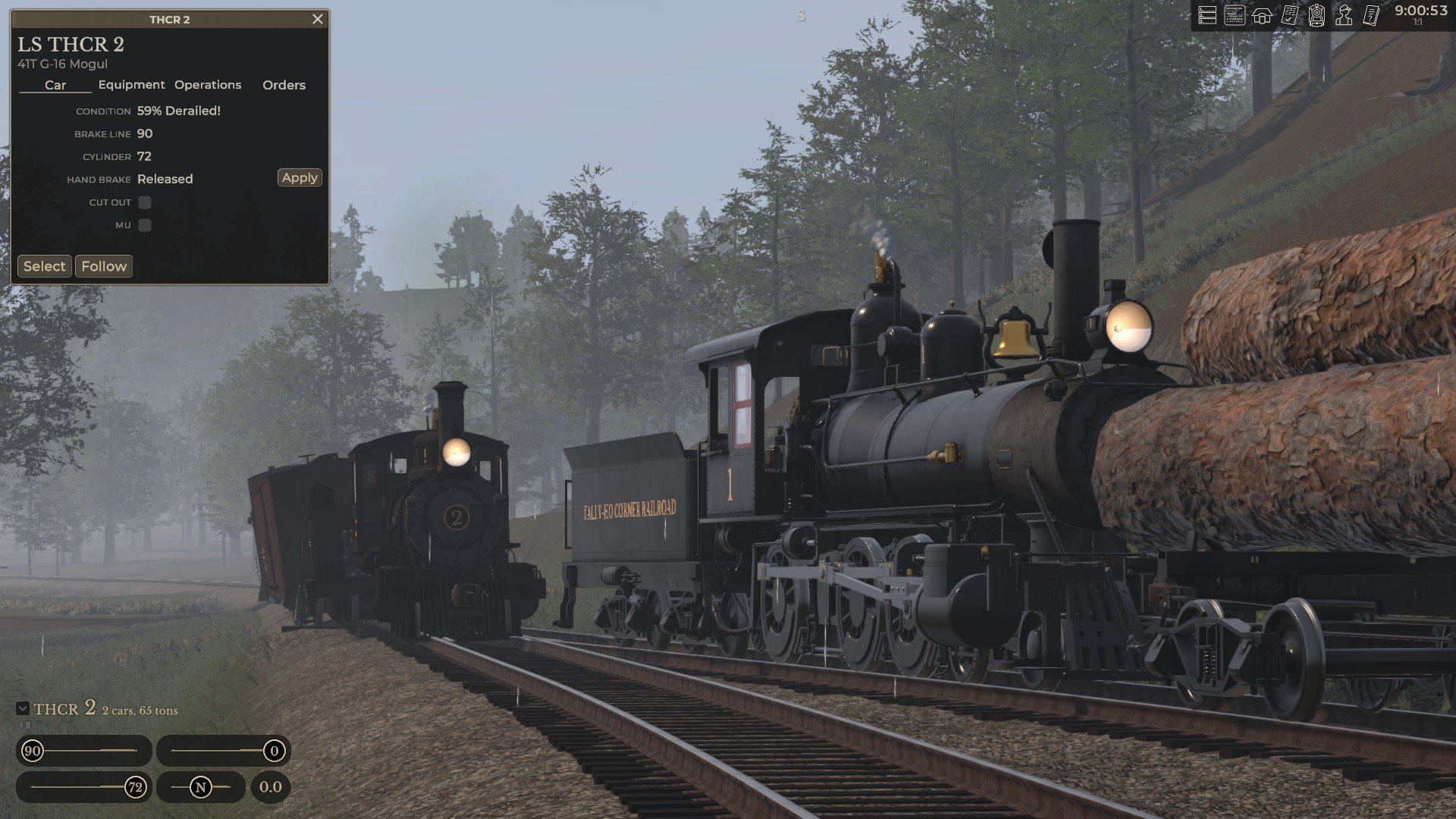
As Giraffe Lab has yet to unveil a public roadmap, I can’t tell you whether dynamic weather* and scenery enhancements are coming. Derail Valley devotees may find the wooded valleys around Whittier and Ela a tad claustrophobic and monotonous. Some additional tree models and extra dwellings, fields, and fences, would help. Occasional deer and bear sightings? Better still.
* Currently, if you want overcast, foggy, or wet conditions you must activate them with a console command.
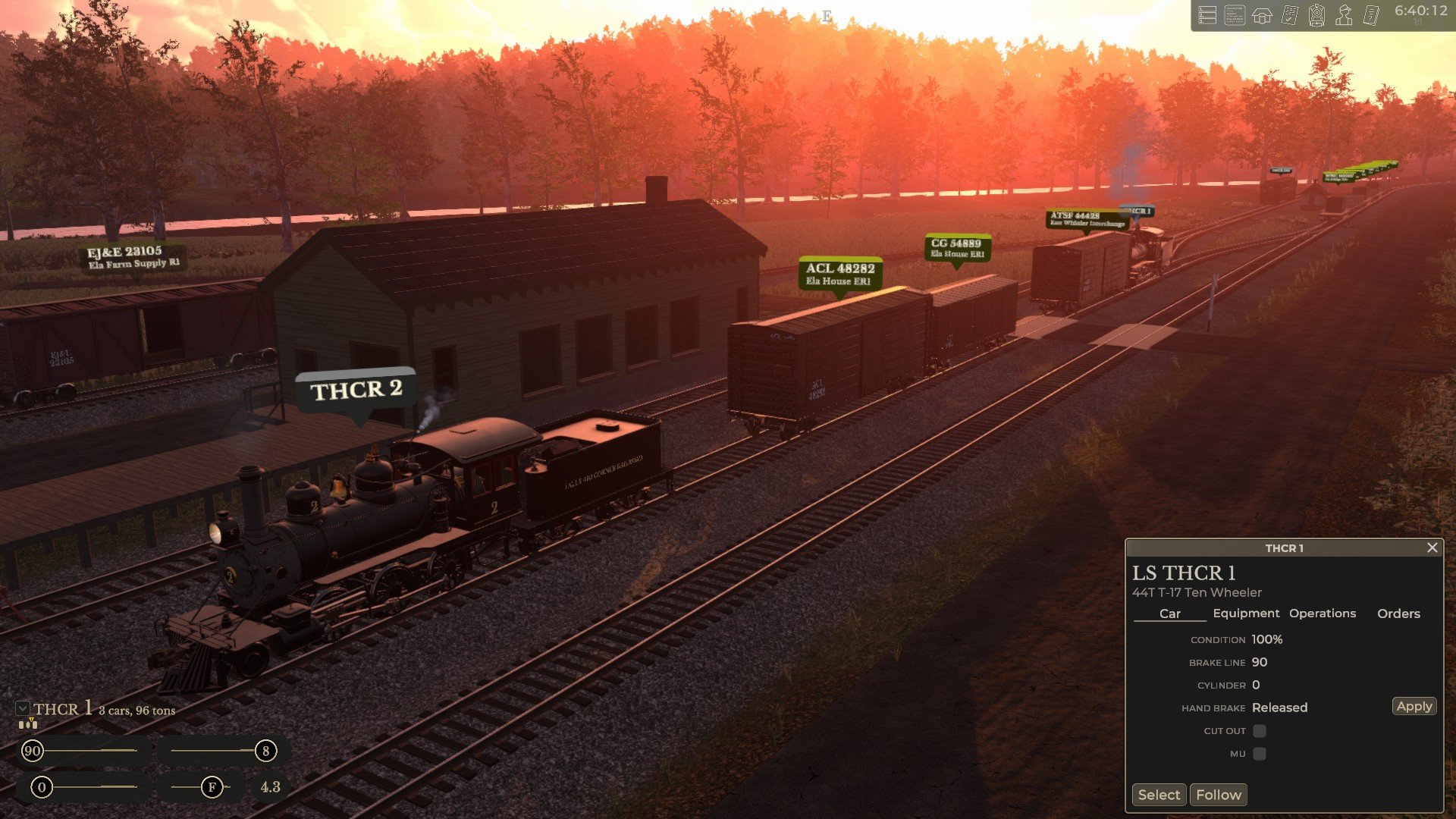
Judging from this FAQ we’ll probably never get to add or extend sidings and passing loops the way real railway companies of the era did. Awkward locations will remain awkward locations for evermore. In a rail sim short of charm, novelty, and natural momentum, an inconsistency like this might have been the final straw. In a game in which every freight car delivery is a mesmerising logic puzzle wreathed in steam and smoke, and punctuated by whistle hoots and clanging couplers, such limitations are awfully easy to overlook.

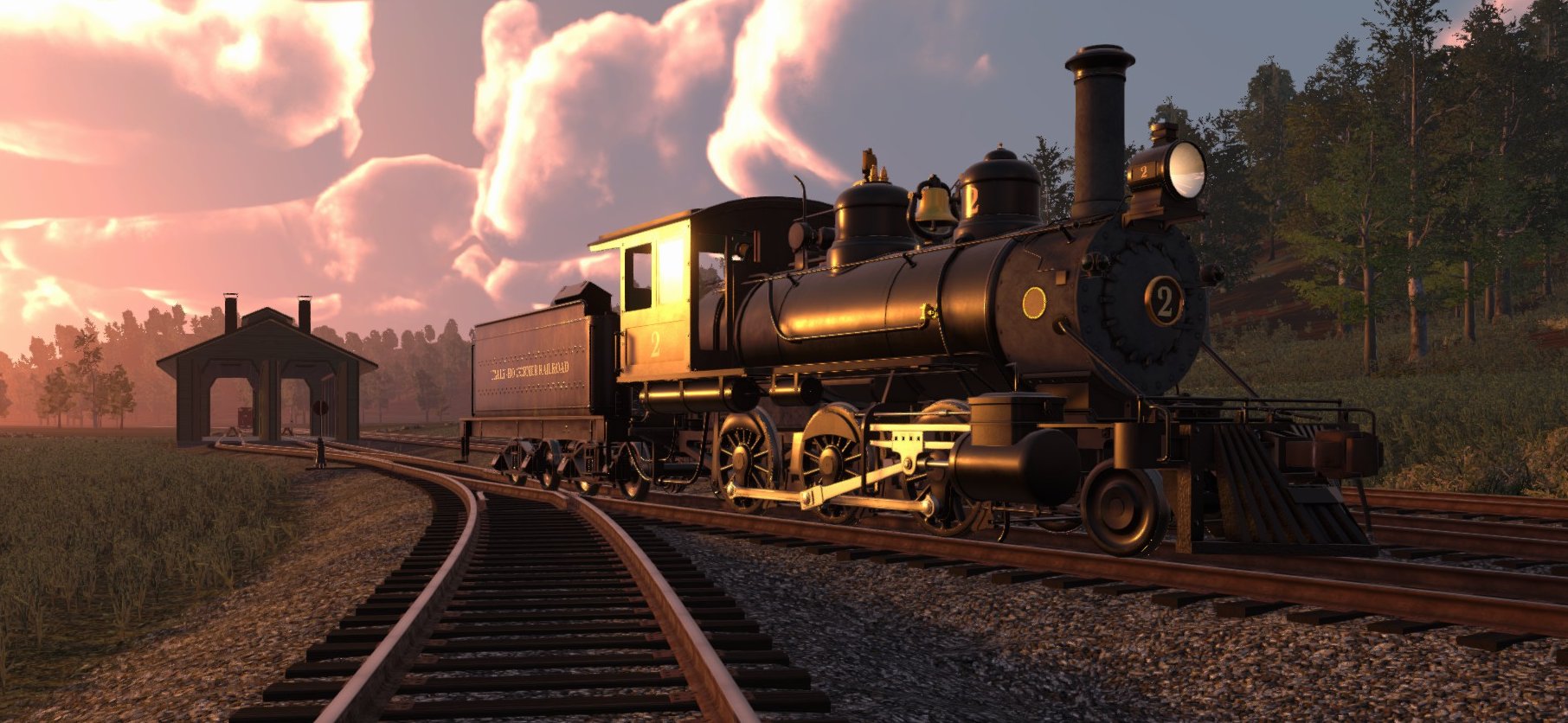
Hi Tim,
Agreed on Railroader being excellent, bought it a week or so ago and its become my “chill out for an hour or two” game.
One thing. No need to change the points to stop a train. If you place the mouse pointer just past where you want the train to stop, and over the track, and press ctrl-f it’ll drop a “fusee” there – basically a road flare. Trains in road mode won’t cross those. I put one near the crossing at Whittier and another just past Ela station, and then have my Mogul shuffle my Pullman back and forwards between them.
If I want to run something else past Ela I use the other line at Whittier station, and either defuse the fusee at Ela by clicking on it, then after the train has passed put it back, or I manually drive the train over the fusee then put it back in AI control..
Find that all quite useful, though I’d hope the AI might expand its capabilities as EA continues as you say.
Thanks for the fusee tip! They’re a real labour-saver.
VFRHawk already mentioned the incredibly useful fusees, but I wanted to mention in the travails of my Hogwallow & Eastern I’ve found that acquisition of the line to Sylva also unlocks milestones allowing for a servicing facility at Dillsboro as well as building a small yard there. Westward expansion beyond Bryson remains obscured by rhododendrons and balance sheets.
I’ve block signals from Bryson to Whittier and so far the virtual hoggers haven’t prompted nosy ICC and FRA types to poke around.
Also worth mentioning is the color of the waybill tags on the cars- green is early (which if delivered early earns a small bonus), yellow indicates on-time, and red is running late (which only seems to earn a reputation penalty if not delivered by the end of the day).
Changing the interchange service time to 4:00AM seems to me at least to generate more ‘early’ cars.
Increasing the tiers of the freight contracts is also supposed to generate more passenger population in that town, or so I’m told.
Illuminating! Thanks. I’ve not seen a red wagon tag yet, but I was wondering why my first Bryson car sported a green one.
Thank you for your honest and thorough review. I have been looking forward to when you made the time for this game.
Morale +1. Thanks.
My typical issue with train sims is that I’m not sufficiently interested in trains for merely driving a train to engage my interest for more than a few minutes. Add some business elements, though, and make it my responsibility to puzzle out switching and storage? That sounds a little more up my alley.
No new games until I finish Baldur’s Gate 3, though.